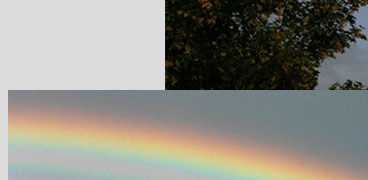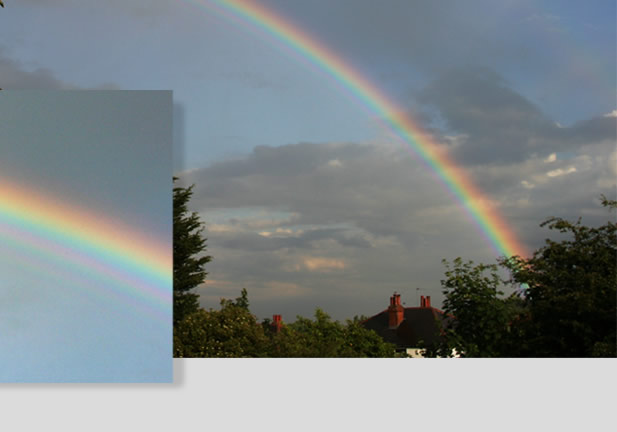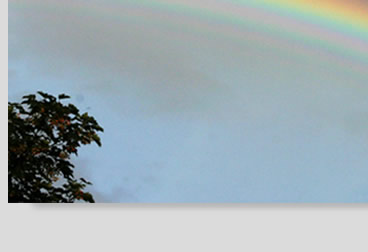| Supernumeraries at a bow's top |  |
 |
||
 |
||
 |
 |
|
 |
||
|
|||||||||||||
|
|||||||||||||
| Study in Supernumeraries Evening bows showing primary and secondary bows, Alexander's Dark band and multiple supernumeraries inside the bow top. Imaged in Leeds, UK by Chris Terran (website) on June 21, 2004. ©Chris Terran |
Often the raindrops forming the rainbow have a wide range of sizes. Paradoxically, this can help produce clear supernumeraries at the bow top. The larger raindrops are slightly flattened as they fall and rays forming the rainbow top have to pass through their flattened vertical cross-section. It so happens that the combination of flattening and the variation in supernumerary spacing with drop size produces a persistent fringe spacing of ~0.7° when the drop size distribution is very broad. Lower down the bow, rays passing through the large flattened drops cross them in planes only slightly tilted from horizontal. At these angles their cross sections are more nearly circular and the effect no longer operates. The wide variety of drop sizes then produces a range of supernumerary spacings. The supernumeraries overlap and we see only the primary bow with enhanced brightness inside. When the raindrops are smaller and less diverse in size, the supernumerary spacing does depend on drop size as seen in the complex rainbow display at Statesville, North Carolina. |

